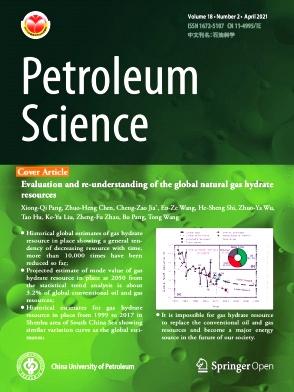Oilfield sustainability and management: An optimization model for the reconstruction of oil and gas gathering systems based on potential location mining
IF 6
1区 工程技术
Q2 ENERGY & FUELS
引用次数: 0
Abstract
The carbon emissions and cost during the construction phase are significant contributors to the oilfield lifecycle. As oilfields enter the late stage, the adaptability of facilities decreases. To achieve sustainable development, oilfield reconstruction was usually conducted in discrete rather than continuous space. Motivated by economic and sustainability goals, a 3-phase heuristic model for oilfield reconstruction was developed to mine potential locations in continuous space. In phase 1, considering the process characteristics of the oil and gas gathering system, potential locations were mined in continuous space. In phase 2, incorporating comprehensive reconstruction measures, a reconstruction model was established in discrete space. In phase 3, the topology was further adjusted in continuous space. Subsequently, the model was transformed into a single-objective mixed integer linear programming model using the augmented ε-constraint method. Numerical experiments revealed that the small number of potential locations could effectively reduce the reconstruction cost, and the quality of potential locations mined in phase 1 surpassed those generated in random or grid form. Case studies showed that cost and carbon emissions for a new block were reduced by up to 10.45% and 7.21 %, respectively. These reductions were because the potential locations mined in 1P reduced the number of metering stations, and 3P adjusted the locations of metering stations in continuous space to shorten the pipeline length. For an old oilfield, the load and connection ratios of the old metering station increased to 89.7% and 94.9%, respectively, enhancing operation efficiency. Meanwhile, recycling facilitated the diversification of reconstruction measures and yielded a profit of 582,573 ¥, constituting 5.56% of the total cost. This study adopted comprehensive reconstruction measures and tapped into potential reductions in cost and carbon emissions for oilfield reconstruction, offering valuable insights for future oilfield design and construction.
求助全文
约1分钟内获得全文
求助全文
来源期刊

Petroleum Science
地学-地球化学与地球物理
CiteScore
7.70
自引率
16.10%
发文量
311
审稿时长
63 days
期刊介绍:
Petroleum Science is the only English journal in China on petroleum science and technology that is intended for professionals engaged in petroleum science research and technical applications all over the world, as well as the managerial personnel of oil companies. It covers petroleum geology, petroleum geophysics, petroleum engineering, petrochemistry & chemical engineering, petroleum mechanics, and economic management. It aims to introduce the latest results in oil industry research in China, promote cooperation in petroleum science research between China and the rest of the world, and build a bridge for scientific communication between China and the world.
 求助内容:
求助内容: 应助结果提醒方式:
应助结果提醒方式:


